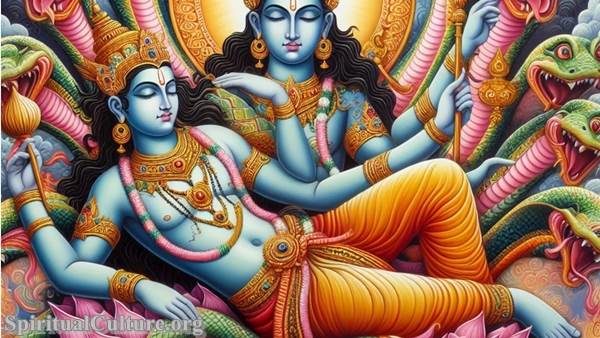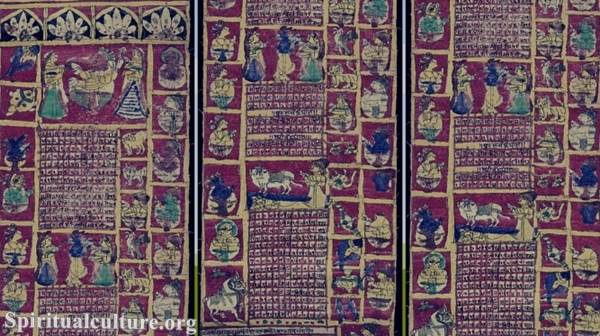Tantra has long evoked curiosity, mystery, and misunderstanding. Often mistaken for indulgence or even taboo, its deeper dimensions are cloaked in esoteric language and symbolism. Nowhere is this more true than in the Panchamakara — the “Five Ms” — a set of sacred ritual elements whose outer form belies a profoundly inner journey.
As Spiritual Culture, we invite you to step beyond appearances. This article will explore what the Panchamakara truly represents in Tantric thought — not as mere ritual items, but as keys to transformation. Why are meat, fish, wine, grain, and intercourse part of sacred practice? What is their symbolic meaning? And how do they connect to the hidden path of inner liberation?
Let us walk gently into the heart of Tantric esotericism, where the sacred is hidden in the ordinary — and the ordinary, when consecrated, becomes divine.
The Sacred Five: What Are the Panchamakara?
The Literal Meaning: The “Five Ms” in Tantra
In traditional Tantric texts, particularly in left-hand (Vāmācāra) paths, the Panchamakara refers to five ritual offerings, each beginning with the letter “Ma” in Sanskrit:
- Madya (wine)
- Māṁsa (meat)
- Matsya (fish)
- Mudrā (grain or parched cereal)
- Maithuna (ritual sexual union)
To the uninitiated, this list seems to contradict every norm of Indian spiritual asceticism. However, these elements are not about indulgence — they are deliberately provocative symbols meant to shatter conditioned notions of purity, duality, and morality. In Tantric tradition, the path to liberation involves transforming every aspect of life, including that which is commonly rejected.
Symbolism Over Literalism: The Two Streams of Interpretation
The Panchamakara is understood in two primary ways:
- Literal Practice (Vāmācāra): In certain traditions, these items are used ritually in sacred contexts, often in secret. The aim is to transmute desire and fear into spiritual awakening by confronting them directly.
- Symbolic Practice (Dakṣiṇācāra): In more esoteric or right-hand paths, the Panchamakara is interpreted symbolically. Each “M” becomes a metaphor for inner experience — sensory awareness, inner sacrifice, union of opposites, or liberation through control of primal forces.
As the Kularnava Tantra suggests:
“He who sees the symbols as mere symbols, and not the Spirit behind them, remains in bondage.”
The Inner Alchemy of the Panchamakara
Madya: The Elixir of Awareness
Beyond Wine — Into the Nectar of Consciousness
Madya, or ritual wine, is not about intoxication but about ecstasy. In symbolic interpretation, it represents the bliss of divine consciousness — the inner nectar (amrita) tasted during meditative absorption. It also points to the surrender of ego-bound logic and control, allowing the mind to dissolve into the sacred flow.
As described in Shiva Sutras:
“Cetanā rasanā rūpā — Consciousness is the taste of all experience.” (1.3)
Māṁsa: The Offering of Desire
Eating Flesh — or Burning the Ego?
Māṁsa, or meat, can represent the offering of our animal instincts into the fire of self-awareness. To “consume meat” in the esoteric sense is to digest our attachments — to transmute desire, aggression, and ego into spiritual insight.
Tantra does not reject the body. It teaches us to master it — not by repression, but by sacred engagement.
Matsya: The Fluidity of Being
Fish as a Symbol of Motion and Freedom
Matsya, or fish, thrives in water — the element of emotion, the subconscious, and the flowing nature of life. In the symbolic view, it represents the capacity to move freely through changing inner states without attachment.
Like a fish in the ocean, the yogi learns to swim in duality without drowning in it.
Mudrā: The Seal of Surrender
Grain, Gesture, and the Gateway to Devotion
Mudrā means grain in this context, but it also translates as “gesture” or “seal.” This dual meaning is important. Grain represents nourishment — the ability to sustain spiritual life. Mudrā also implies a ritual gesture that seals intent, evokes deities, or directs energy.
Symbolically, it is the offering of total surrender — the readiness to nourish the divine within by sealing our actions in sacred purpose.
Maithuna: Sacred Union
The Divine Dance of Shakti and Shiva
Perhaps the most misunderstood of the five is Maithuna, or sacred sexual union. In literal Vāmācāra rituals, it is performed with profound discipline and intention — not as indulgence, but as a cosmic act. It reflects the union of opposites, of Shiva (consciousness) and Shakti (energy), which gives rise to creation itself.
In symbolic paths, Maithuna represents the merging of the inner masculine and feminine, the balancing of solar and lunar forces within the body.
As the Spanda Karika proclaims:
“All movement arises from the union of Shiva and Shakti.”
Why Tantra Uses Taboo: Breaking the Bonds of Duality
The Spiritual Logic Behind Provocation
Tantra is a spiritual revolution. It does not seek to escape the world — it seeks to consecrate it. The use of taboo elements in the Panchamakara is a deliberate method to shock the mind out of its conditioning. The dualities of pure/impure, sacred/profane, good/evil are dissolved in the light of direct experience.
As Spiritual Culture, we must understand: this is not an endorsement of transgression for its own sake. Rather, it is the call to realize that nothing is inherently impure — unless the mind makes it so.
The Mahanirvana Tantra declares:
“Where there is the sense of oneness, there is liberation. Where there is division, there is bondage.”
Esotericism and Secrecy: Why the Panchamakara Is Hidden
Protecting the Sacred from Misuse
The Panchamakara is rarely taught openly. Its practice is reserved for advanced initiates under the guidance of a guru. Why?
Because without proper context, ritual can devolve into indulgence. The outer form can be mistaken for the goal, and the symbolic misunderstood as license for egoic behavior.
This is the nature of esotericism: to veil the sacred not out of elitism, but out of compassion. Just as a child should not play with fire, so too the deeper rites are revealed only when the soul is ripe.
As the Tantra Sara teaches:
“The truth is subtle, hidden like butter in milk. It is churned only by the sincere heart.”
Inner Tantra: Awakening Without Outer Ritual
How the Panchamakara Lives Within You
You do not need to perform literal rituals to walk the Tantric path. The Panchamakara, rightly understood, is a map of inner transformation. It is the art of taking every experience — even the darkest — and turning it into a doorway to light.
- Madya becomes your ecstasy in meditation
- Māṁsa becomes your sacrifice of selfish desire
- Matsya becomes your fluidity in emotional awareness
- Mudrā becomes your seal of intentionality
- Maithuna becomes your inner union of divine opposites
In this way, every moment becomes sacred. Every sense becomes a sādhanā (spiritual practice). This is the essence of Tantra: nothing is outside the path.
Reflect and Reimagine
The Panchamakara invites us to a deeper way of seeing. It is not about shock or sensuality — it is about shattering illusion. When rightly understood, it teaches us that the divine is not elsewhere, but here — in flesh and fire, taste and touch, longing and love.
As Spiritual Culture, we encourage you to reflect: What parts of your life have you labeled as “impure”? What desires have you buried, rather than transforming?
Perhaps the path of Tantra is not about adding anything, but reclaiming everything — your body, your emotions, your breath, your being — as sacred.
And in that sacred reclamation, the true esotericism of the Panchamakara is no longer hidden. It shines, quietly, from within.


